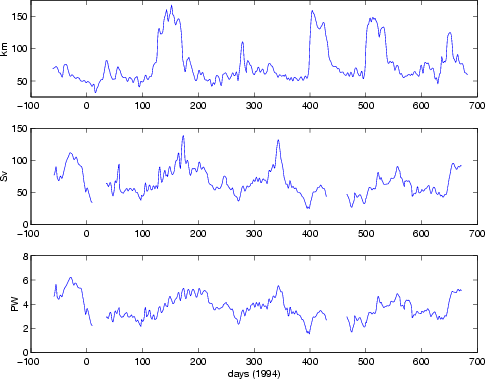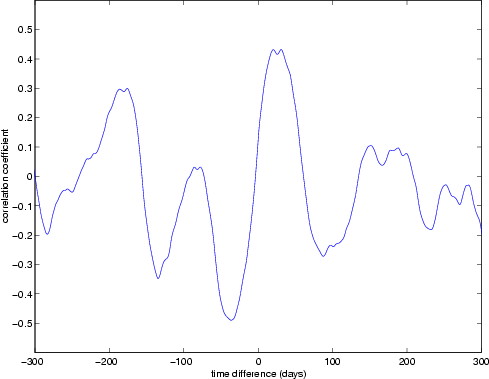Kuroshio Transports continued |
The meanders do appear to be related with volume transport variations,
but not in a simple way. Below are the Kuroshio offshore position,
Kuroshio volume transport, and Kuroshio temperature transport plotted
together.
|

|
|
Kuroshio offshore position (upper panel), volume transport (middle
panel), and temperature transport (lower panel) from November of 1993
to November of 1995.
|
Comparing these time series, there appear to be transport minima
20-50 days before each of the six meander maxima. To examine this
relationship quantitatively, the cross-correlation coefficient
function between Kuroshio position and volume transport time series
was calculated for lags and leads up to 300 days.
|

|
|
Cross-covariance function for Kuroshio offshore position and Kuroshio
volume transport. Negative time differences indicate a lead in
transport time and positive time differences indicate a lag in
transport time.
|
This function shows maximum negative correlation with a coefficient of
-0.49 for a 36-day lead in transport time, and maximum positive
correlation with a coefficient of 0.43 for a 31-day lag. This
indicates transport tends to be low one month before a meander peak
and high one month afterwards. Moreover, the cross-correlation
coefficient function displays near-periodicity with secondary minima
and maxima occurring ~ 114 days before and after the primary
minimum and maximum. This period is similar to that of the meander
events.
|

